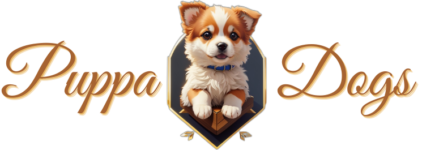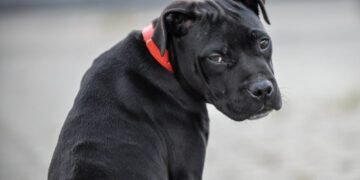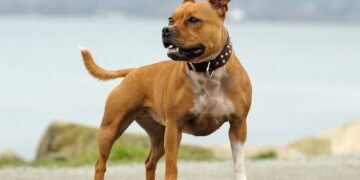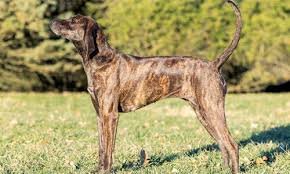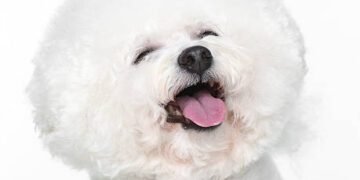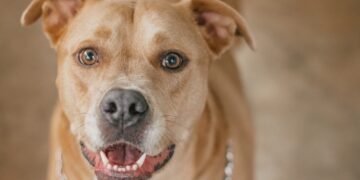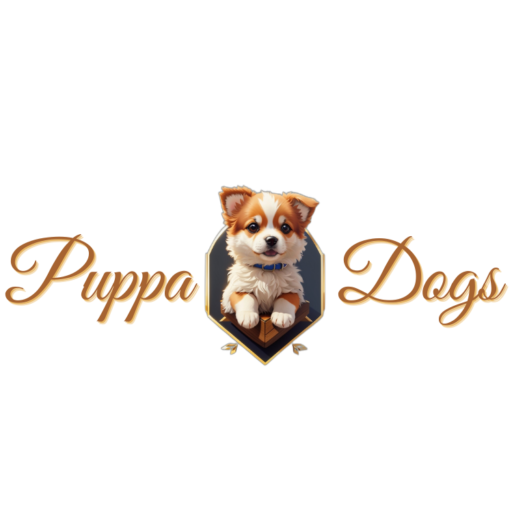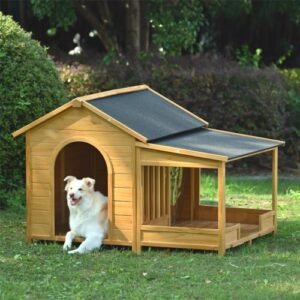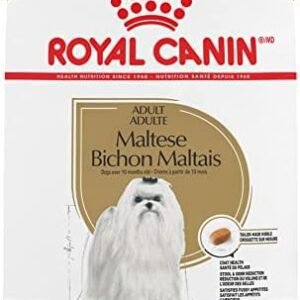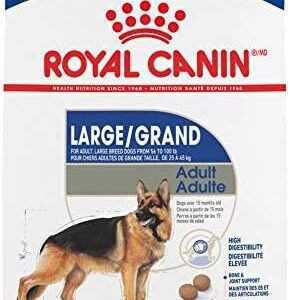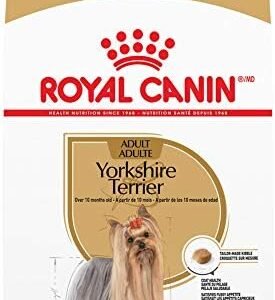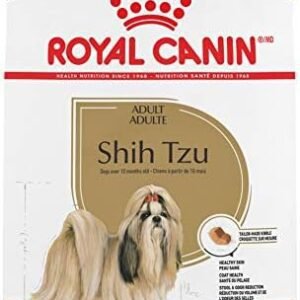The Plott Hound, a loyal and tenacious breed, has deep American roots and a reputation as an exceptional hunting companion. Known for its striking brindle coat and courageous spirit, this breed originated from German hounds brought to the U.S. in the 1700s. Despite its rugged hunting history, the Plott Hound also thrives as a loving family pet.
In this blog, we’ll explore the unique traits, care needs, and fascinating history of the Plott Hound. Whether you’re a dog enthusiast or considering one for your home, this guide will give you everything you need to know about this remarkable breed. Stick around to discover why the Plott Hound has captured the hearts of so many!
Table of Contents
Selecting Plott Hound
Let’s begin our journey into the world of the Plott Hound with a captivating fact – the Plott Hound is a breed renowned for its exceptional hunting abilities and unwavering loyalty. These dogs have a storied history that defines their character and sets them apart as a breed like no other. When selecting a dog to welcome into your family, understanding the breed’s characteristics is paramount. The Plott Hound’s distinct traits can significantly influence its behavior, needs, and compatibility with your lifestyle.
Now, let’s dive into a table to provide an in-depth overview of the Plott Hound breed:
| Field | Information about the Plott Hound |
|---|---|
| Height | 20 to 25 inches at the shoulder |
| Weight | 50 to 60 pounds |
| Life Span | 12 to 14 years |
| Good with | Active families, hunters, and singles |
| Temperament | Loyal, fearless, and tenacious |
| Intelligence | High intelligence, quick learners |
| Shedding Amount | Moderate shedding |
| Grooming | Low-maintenance coat, occasional brushing |
| Exercise Needs | High exercise needs |
| Energy Level | Very high energy level |
| Barking Level | Vocal and alert |
| Drool Amount | Minimal |
| Coat Length/Texture | Short and dense |
| Colors | Brindle, varying shades of brown |
| Patterns | Brindle stripe |
Breed History and Origin
The history and origin of the Plott Hound are nothing short of fascinating, with a rich tapestry of influences that have shaped this unique breed. In this section, we’ll take a closer look at the historical development of the Plott Hound, explore the notable traits that set it apart, and delve into how its origin continues to influence its characteristics today.
Exploring Their Roots:
The Plott Hound’s origins can be traced back to the early 18th century when Johannes Plott, a German immigrant, brought a pack of five Hanoverian Hounds to the United States. These dogs would eventually form the foundation of what we now know as the Plott Hound. The breed’s name is a tribute to Johannes Plott’s contribution to its development.
The Plott Hound’s development continued with these early dogs being selectively bred and adapted to the rugged terrain and hunting challenges of the American wilderness. Their skills as boar hounds became legendary, and they were instrumental in hunting large game, particularly wild boars.
Notable Traits:
The Plott Hound is known for several distinctive traits that have contributed to its status as a remarkable breed. One of the most striking features is their brindle coat. The Plott Hound’s coat typically displays varying shades of brown with brindle stripes, giving them a unique and eye-catching appearance. This distinctive coat pattern has become a hallmark of the breed.
Their history as tenacious and fearless hunters is another notable trait. The Plott Hound is renowned for its ability to track, corner, and confront large and powerful game, making it an invaluable hunting companion. This tenacity and courage have been preserved in the breed’s temperament and continue to define its character.
Relevance of Origin:
The Plott Hound’s origin is still relevant today, as it continues to influence the breed’s characteristics and temperament. While their historical role as boar hounds may have evolved, they retain their hunting instincts, loyalty, and fearlessness.
Their strong prey drive, honed over centuries of hunting, remains a part of their temperament. Plott Hounds are highly intelligent and quick learners, which is essential for hunting activities that require problem-solving and adaptability. This intelligence, combined with their courage, makes them excellent working dogs and loyal companion
Understanding the Plott Breed’s Traits
In this section, we will delve into the unique traits that define the Plott breed. Understanding their physical characteristics, temperament, suitability as family pets, and compatibility with other pets is essential for making an informed decision about bringing a Plott Hound into your life. We will also explore the breed’s environmental needs and common behavioral traits, both positive and challenging.
Physical Characteristics:
The Plott breed possesses distinct physical attributes that contribute to their exceptional nature. Let’s break down their key physical characteristics:
Temperament Overview:
Plott Hounds are known for their distinctive temperament, making them unique in the canine world. Here’s an overview of their personality traits:
- Loyal: Plott Hounds are exceptionally loyal dogs. They form strong bonds with their families and are known for their unwavering devotion. This loyalty makes them excellent companions.
- Fearless: Their history as hunting dogs has endowed them with fearlessness. Plott Hounds are not easily intimidated, and their courage is a defining trait. They make excellent protectors and hunting partners.
- Suitability as Family Pets: Plott Hounds can be excellent family pets, especially in active households. They are energetic and thrive when engaged in activities. Their loyalty and affection make them great with children and family members
- Compatibility with Other Pets: While Plott Hounds are usually friendly and tolerant of other dogs, their strong prey drive can be a concern around smaller pets like cats or small mammals. Proper socialization from an early age can help mitigate any potential issues.
- Environmental Needs: Plott Hounds are adaptable dogs that can settle into various environments. They enjoy spacious areas where they can expend their high energy levels. They are suitable for both urban and rural settings, as long as they receive adequate exercise.
Common Behavioral Traits:
Plott Hounds come with a range of behavioral traits, both positive and challenging. Here are some of the most notable:
- Intelligence and Trainability: Plott Hounds are highly intelligent and quick learners. This intelligence is beneficial for training, but it can also lead to stubbornness at times. Consistent, positive reinforcement-based training is key.
- Socialization and Exercise Needs: Socializing your Plott Hound from a young age is essential to ensure they interact well with people and other animals. Additionally, their exercise needs are high due to their abundant energy. Daily walks, playtime, and mental stimulation are crucial to keep them happy and well-behaved.
- Barking and Alertness: Plott Hounds are known for being vocal and alert. They make excellent watchdogs due to their keen senses and readiness to alert their owners to potential threats.
Popularity and Recognition

In this section, we will explore the current popularity and recognition of the Plott breed. Understanding how well-received this exceptional breed is in the canine world and its recognition by kennel clubs and breed organizations is crucial for anyone considering bringing a Plott Hound into their life.
Current Popularity:
The popularity of the Plott breed today is influenced by a variety of factors. While not among the most widely recognized breeds, Plott Hounds have gained a dedicated following among hunting enthusiasts and dog lovers who appreciate their unique qualities.
Ownership Trends: Plott Hounds are particularly popular among hunters and active families. Their skill in hunting and their loyal nature make them excellent companions for those who enjoy outdoor activities. However, it’s important to note that their high energy levels and specific needs might not be suitable for every dog owner.
Social Media and Online Communities: With the rise of social media and online communities, Plott Hound enthusiasts have found platforms to share their experiences and connect with like-minded individuals. There are dedicated Plott Hound groups and forums where owners discuss the breed’s unique attributes and offer support and advice to others.
Breed Recognition:
The Plott breed has achieved recognition from various kennel clubs and breed organizations, acknowledging its status as a distinctive and exceptional breed.
Kennel Club Recognition:
The American Kennel Club (AKC) officially recognized the Plott Hound in 2006. This recognition marked an important milestone for the breed, providing a platform for more people to discover and appreciate its qualities.
United Kennel Club (UKC):
The Plott Hound has been recognized by the United Kennel Club, which is one of the oldest dog breed registries in the United States. This recognition by UKC also highlights the breed’s unique attributes and importance in the canine world.
Notable Breed Varieties:
The Plott breed primarily consists of a single variety with specific breed standards, but there might be regional or individual variations based on the dog’s intended purpose and geographical location. Here are a few distinctions within the Plott Hound community:
American Plott Hound: The American Plott Hound is the most common variety and is recognized by kennel clubs. They are known for their tenacity, courage, and strong hunting instincts. These dogs excel as hunting companions and are prized for their ability to track and corner game.
European Varieties: In the regions of Europe, you might find Plott Hounds that have been bred for various purposes. While these dogs share the Plott Hound’s distinctive traits, they may have slight variations in appearance or hunting skills based on their specific lineage and intended use.
Individual Differences: Like any breed, individual Plott Hounds can have unique traits and personalities. Some may be more sociable and adaptable, while others may exhibit a stronger prey drive. It’s essential to spend time with a Plott Hound to understand their specific characteristics and ensure a good match for your lifestyle
Health Considerations and Care
In this section, we will focus on the health considerations and care guidelines for the Plott breed. Understanding potential health issues, promoting longevity, and providing proper care are essential for keeping your Plott Hound in excellent health and ensuring a long, happy life for your canine companion.
Common Health Issues:
Plott Hounds are generally healthy dogs, but like all breeds, they can be prone to certain health issues. Being aware of these conditions and taking preventive measures is crucial. Here are some common health concerns associated with the Plott breed:
| Health Issue | Description | Management |
|---|---|---|
| Hip Dysplasia | Improper development of the hip joint, leading to discomfort, lameness, and arthritis. | Regular veterinary check-ups, weight management, and joint supplements as needed. |
| Bloat (Gastric Torsion) | Life-threatening condition where the stomach fills with gas and twists. | Feed smaller, frequent meals, avoid exercise after eating, and know the signs for emergency care. |
| Ear Infections | Common due to pendulous ears, which trap moisture and debris. | Regular ear cleaning with vet-recommended solutions and inspections to prevent infections. |
| Eye Conditions | Susceptible to issues like entropion (inward-rolling eyelids) and cataracts. | Routine eye check-ups and timely treatment if conditions are detected. |
| Skin Allergies | May develop skin issues causing itching and discomfort. | Regular grooming, brushing, and use of vet-recommended shampoos or medications |
Lifespan and Longevity:
The average lifespan of a Plott Hound is 12 to 14 years. To promote a longer and healthier life for your Plott, consider the following tips:
- Regular Veterinary Check-ups: Regular check-ups with your veterinarian are crucial for early detection and prevention of health issues. Your vet can provide guidance on vaccinations, dental care, and overall wellness.
- Balanced Diet: Feeding your Plott Hound a well-balanced and age-appropriate diet is essential. Consult with your veterinarian to determine the best food for your dog’s needs. Avoid overfeeding to maintain a healthy weight.
- Exercise and Mental Stimulation: Plott Hounds are high-energy dogs and require ample exercise and mental stimulation. Daily walks, playtime, and interactive toys help keep them physically and mentally fit.
- Grooming: Despite their short coat, regular grooming is important. Brushing your Plott Hound can help remove loose hair and distribute natural oils. Occasional baths are necessary, and be sure to check their ears for signs of infection.
- Socialization: Early socialization is essential to ensure your Plott Hound interacts well with people and other animals. Positive experiences with other dogs and various environments can help shape their behavior.
- Training: Plott Hounds are intelligent but can be stubborn. Consistent, positive reinforcement-based training is key to their obedience and well-behaved nature. Enroll in obedience classes if needed
- Preventive Care: Besides vaccinations, preventive measures such as flea and tick control, heartworm prevention, and regular dental care are vital for your Plott Hound’s well-being.
- Spaying/Neutering: Discuss with your veterinarian when to spay or neuter your Plott Hound. This decision can affect their health, behavior, and lifespan.
- Quality of Life: As your Plott Hound ages, ensure their quality of life by adapting their care to their changing needs. Provide comfortable bedding, monitor their diet, and be mindful of their energy levels.
By following these guidelines and providing diligent care, you can help ensure your Plott Hound enjoys a long and healthy life. Regular veterinary check-ups and early intervention in case of health issues are essential in promoting their longevity and overall well-being
Exercise and Activity Recommendations
Plott Hounds are high-energy dogs with a history as tenacious hunters. To keep them happy and healthy, it’s crucial to provide them with regular exercise and mental stimulation. In this section, we’ll provide a detailed exercise plan for Plott Hounds, including various types of exercise, recommended duration, and frequency.
Understanding Their Energy Level:
Plott Hounds are known for their very high energy levels. They have a natural drive to be active and engaged, making them ideal for individuals or families with an active lifestyle. Failing to provide adequate exercise can lead to behavioral problems and dissatisfaction for these energetic dogs.
Types of Exercise:
- Outdoor Playtime: Plott Hounds love to run and play in open spaces. Organized play sessions in a securely fenced yard or a dog park provide an excellent opportunity for them to burn off energy. Playing fetch, tug-of-war, or chasing toys are all activities they enjoy.
- Long Walks: Regular long walks are beneficial for both physical and mental stimulation. Aim for at least one hour-long walk daily. Plott Hounds are known for their excellent endurance, so they can keep up with an active walking pace.
- Agility Training: Agility exercises and obstacle courses can be a fun way to engage their intelligence and physical abilities. Plott Hounds are quick learners, making them suitable for agility training. You can set up agility equipment in your backyard or find local clubs that offer training.
- Hiking: If you enjoy hiking, bring your Plott Hound along. They are well-suited for rugged terrain and love exploring the outdoors. Make sure to choose dog-friendly trails, and keep them on a leash or long lead if needed.
- Swimming: Plott Hounds are often water-loving dogs. If you have access to a safe and clean body of water, consider letting them swim. Swimming is a fantastic exercise that’s gentle on their joints and provides excellent cardiovascular benefits.
Duration and Frequency:
- Outdoor playtime: A few times a week for about 30 minutes to an hour.
- Long walks: At least one hour-long walk daily. More if possible.
- Agility training: Once a week or as often as you like, depending on your dog’s interest and availability.
- Hiking: Whenever you go hiking, as long as the trail is suitable for dogs.
- Swimming: Whenever you have access to safe water sources.
Additional Tips:
- Since Plott Hounds are vocal and alert, engaging their minds through obedience training or puzzle toys can help prevent boredom.
- Use positive reinforcement techniques during training and play to keep them motivated.
- Be mindful of hot weather. Plott Hounds can overheat, so exercise them during cooler parts of the day in hot climates.While exercise is crucial, don’t overexert them, especially when they are puppies or seniors. Be attuned to their needs and adjust exercise accordingly.
- Socialization is also a form of mental stimulation, so introduce your Plott Hound to various environments and other dogs to keep them well-rounded.
Remember that the key to a happy Plott Hound is providing a balance of physical and mental exercise. Regular activity helps prevent behavioral issues and maintains their overall well-being. An active and engaged Plott Hound is a content one, ready to be a loyal and devoted companion to you and your family.
Nutrition and Feeding Guidelines for Plott Hounds
Proper nutrition is a crucial aspect of caring for your Plott Hound. To ensure their health, vitality, and overall well-being, you must provide them with a balanced and appropriate diet. In this section, we’ll cover specific dietary recommendations based on the Plott Hound’s size, age, and activity level. We’ll also mention any dietary restrictions or allergies commonly associated with the breed and provide information on feeding schedules and portion control.
Size, Age, and Activity Level:
Plott Hounds are medium-to-large dogs with very high energy levels. Their nutritional needs can vary based on factors like age, size, and activity level. Here are some guidelines to consider:
- Puppies: Plott Hound puppies should be fed a high-quality puppy food specially formulated to support their growth and development. These growing pups have high energy needs, so choose a puppy food that provides a balance of protein, fat, and essential nutrients. Feeding frequency for puppies is typically 3 to 4 times a day, gradually transitioning to 2 meals a day as they grow.
- Adults: Adult Plott Hounds need a balanced diet to maintain their energy and muscle mass. High-quality commercial dog food with a protein content of around 18-25% is suitable. You can also consider feeding them a raw or homemade diet, but it’s essential to consult with your veterinarian or a canine nutritionist to ensure all their nutritional requirements are met. Feeding them twice a day is the most common schedule for adult Plott Hounds.
- Seniors: Senior Plott Hounds require a diet that supports their aging bodies. Foods formulated for seniors usually have reduced calorie and fat content to help maintain a healthy weight. Senior dogs may also benefit from joint supplements to support their mobility.
- Active Plott Hounds: If your Plott Hound is actively engaged in hunting, agility training, or other high-energy activities, they may need additional calories. You can consider foods designed for active dogs or adjust portion sizes accordingly. Ensure they have a proper balance of macronutrients and plenty of fresh water.
Dietary Restrictions and Allergies:
While Plott Hounds are generally healthy dogs, they can develop food allergies or sensitivities. Common allergens include grains, chicken, and beef. If you notice signs of food allergies such as itching, gastrointestinal upset, or skin issues, consult with your veterinarian to determine the appropriate dietary changes.
Feeding Schedules and Portion Control:
Establishing a regular feeding schedule and practicing portion control is essential to prevent overfeeding or underfeeding your Plott Hound. Here’s a recommended feeding schedule and portion control guidelines:
- Puppies: Feed 3 to 4 meals a day until they are about 6 months old. Gradually switch to 2 meals a day. Follow the portion recommendations on the puppy food packaging based on their age and weight.
- Adults: Feed twice a day, morning and evening. Portion control depends on factors like size, activity level, and the specific food you choose. Start with the recommended portion size on the food packaging and adjust based on your dog’s body condition. Monitor their weight and adjust portions as needed.
- Seniors: Senior dogs may have lower calorie needs, so adjust portion sizes accordingly. Follow the feeding guidelines provided on senior dog food packaging, or consult your veterinarian for personalized recommendations.
- Active Plott Hounds: Active dogs may require more calories. Monitor their weight and body condition, and increase portion sizes if needed. Always ensure they receive the proper balance of nutrients.
- Water: Make sure your Plott Hound has access to clean, fresh water at all times. Hydration is crucial for their well-being.
Homemade or Raw Diets:
If you choose to feed your Plott Hound a homemade or raw diet, it’s essential to consult with a veterinarian or canine nutritionist to ensure they receive a balanced diet. Homemade diets can lack essential nutrients, and raw diets carry certain risks if not properly prepared and handled.
Monitoring Your Dog’s Weight:
Regularly monitor your Plott Hound’s weight and body condition. A healthy Plott Hound should have a well-defined waist when viewed from above and a visible tuck-up in the abdomen. If you notice weight gain or loss, adjust their diet accordingly
Personal Stories and Testimonials
One of the most meaningful ways to understand the Plott Hound breed is through the stories and experiences of their owners. In this section, we’ll delve into real-life stories and testimonials from Plott Hound enthusiasts and owners. These personal accounts shed light on the joys, challenges, and unique qualities of this exceptional breed.
A Loyal Companion on Every Adventure
John, an avid hiker and Plott Hound owner, shares his story:
“I’ve always been a nature enthusiast and enjoy spending my weekends hiking in the wilderness. When I decided to get a dog, I knew I needed a breed that could keep up with my active lifestyle. That’s when I discovered the Plott Hound.
My Plott Hound, Duke, has been my faithful companion on countless adventures. He’s not just a hiking buddy; he’s a part of the family. Duke’s unwavering loyalty and fearlessness have impressed me beyond words. Whether we’re climbing steep trails or navigating rough terrain, he’s right there with me.
What strikes me most about Duke is his adaptability. When we’re outdoors, he’s a tireless adventurer. But when we’re at home, he’s the most loving and affectionate dog you can imagine. The Plott Hound’s ability to switch from an action-packed day to a peaceful evening by the fireplace is truly remarkable.
It’s important to note that Plott Hounds need regular exercise and mental stimulation, but the rewards are immeasurable. Duke has not only enriched my life but also the lives of those he’s met on our journeys. His playful and friendly nature wins over everyone he encounters.”
The Perfect Hunting Partner
Samantha, a dedicated hunter and Plott Hound owner, shares her perspective:
“I come from a family of hunters, and I’ve always been passionate about the sport. When I decided to get a hunting dog, I researched extensively and found that the Plott Hound’s history as a boar hound made it a perfect fit.
My Plott Hound, Rex, is a dedicated hunting partner. His tracking abilities are exceptional, and his fearlessness in the face of large game is awe-inspiring. Whether we’re pursuing wild boar or other game, Rex’s tenacity and courage shine through.
But what I appreciate most about Rex is his loyalty. Plott Hounds are known for forming deep bonds with their owners, and Rex is no exception. Our hunting trips are not just about the pursuit; they’re also about the connection we’ve developed over the years.
Of course, hunting with a Plott Hound comes with responsibilities. Proper training and discipline are key to ensuring a safe and successful hunt. But the rewards of sharing this unique experience with such a remarkable breed are well worth the effort.
Rex has not only been an invaluable hunting companion but also a cherished member of our family. His presence and unwavering loyalty are a testament to the exceptional qualities of the Plott Hound breed.”
An Active Family’s Best Friend
Lisa and Mark, a family with young children and a Plott Hound named Bella, share their story:
“Our family is all about outdoor activities and staying active. We wanted a dog that could match our energy and be a great playmate for our kids. After some research, we decided to adopt a Plott Hound, and it was one of the best decisions we ever made.
Bella, our Plott Hound, is a bundle of energy and enthusiasm. She’s fantastic with our kids, and they adore her. Whether it’s a game of fetch in the backyard, a family hike, or a day at the beach, Bella is right there with us, having the time of her life.
What’s remarkable about Plott Hounds is their adaptability to family life. Bella is protective of our children and is always alert to their needs. She’s a loyal and loving companion who’s brought so much joy into our home.
We’ve found that consistency in training and providing ample exercise are essential for Plott Hounds. But the effort we put into her well-being is repaid tenfold with her affection and companionship. Bella truly completes our active family.”
Challenges and Rewards
Steven, a Plott Hound owner, shares his experiences:
“Owning a Plott Hound is not without its challenges, but the rewards are more than worth it. I’ve had my Plott Hound, Lucy, for several years now, and our journey together has been filled with both joys and lessons.
Lucy is a loyal and protective dog, which is something I appreciate immensely. Her alertness and watchful nature make her an excellent watchdog. However, it also means that she can be quite vocal when she senses any potential threats.
One challenge we faced early on was her energy level. Plott Hounds need consistent exercise and mental stimulation, or they can become restless and exhibit destructive behavior. To overcome this, I established a routine of daily exercise, play, and training. It not only helped her burn off energy but also strengthened our bond.
The process of training a Plott Hound can be challenging due to their intelligence and occasional stubbornness. Consistency, positive reinforcement, and patience are key. But as she learned and adapted, I gained a deep appreciation for her intelligence and problem-solving abilities.
Lucy’s loyalty and affection are unmatched. She’s not just a pet; she’s a true companion who’s always by my side. We’ve faced challenges together, but the journey has been incredibly rewarding. Lucy has brought immeasurable joy and warmth into my life, and I couldn’t imagine it without her.”
Cost of Owning a Plott Hound
Bringing a Plott Hound into your life is a rewarding experience, but it’s essential to be aware of the costs associated with dog ownership. In this section, we’ll break down the expenses, including upfront costs and ongoing expenses, to help you budget for your Plott Hound’s needs.
Upfront Costs:
- Adoption or Purchase: The cost of acquiring a Plott Hound can vary depending on whether you adopt from a shelter or purchase from a breeder. Adoption fees typically range from $50 to $300, while buying from a breeder may cost anywhere from $800 to $2,500 or more, depending on the breeder’s reputation and the puppy’s pedigree.
- Spaying/Neutering: If your Plott Hound isn’t already spayed or neutered, you’ll incur this expense, which typically ranges from $200 to $500.
- Initial Vaccinations: Puppies need a series of vaccinations to protect them from common diseases. The cost of initial vaccinations can range from $75 to $100.
- Microchipping: Microchipping your Plott Hound for identification and tracking typically costs around $45.
- Dog Supplies: You’ll need to invest in essential supplies such as a leash, collar, food and water bowls, crate or kennel, bedding, and grooming tools. These initial expenses can amount to approximately $100 to $200.
- Dog License: Depending on your location, you may need to purchase a dog license, which can range from $10 to $50 per year.
- Training and Socialization: Enrolling your Plott Hound in puppy classes or training sessions can cost around $100 to $300.
Ongoing Expenses:
- Food: The cost of dog food will depend on the brand, quality, and your dog’s size and activity level. On average, expect to spend $30 to $60 per month on high-quality dog food.
- Routine Veterinary Care: This includes annual check-ups, vaccinations, and preventative medications. Budget around $200 to $400 per year for these expenses.
- Grooming: Plott Hounds have short coats, so grooming costs are generally low. Budget for occasional grooming expenses like baths and nail trims, which may total $50 to $100 per year.
- Training and Behavior Classes: Ongoing training and behavior classes, which are beneficial for Plott Hounds, can cost around $100 to $300 per year.
- Toys and Supplies: Dogs need toys and replacement supplies such as bedding, collars, and leashes. Budget $50 to $100 annually.
- Medications and Preventatives: If your Plott Hound requires any medications or monthly preventatives like flea and tick control, plan to spend an additional $50 to $100 per year.
- Pet Insurance: While not mandatory, pet insurance can help cover unexpected medical expenses. Costs vary, but plans often range from $20 to $60 per month.
- Boarding or Pet Sitting: If you travel and can’t bring your Plott Hound, you’ll need to budget for boarding or pet sitting services. These expenses can range from $20 to $60 per day.
- Emergency Vet Care: It’s crucial to have an emergency fund for unexpected medical expenses, as these can vary significantly depending on the situation. Having a few hundred dollars saved for emergencies is advisable.
- License Renewal: Be prepared to renew your dog’s license annually, which may cost $10 to $50 per year.
- Treats and Miscellaneous Expenses: Don’t forget to budget for treats and miscellaneous items, such as special toys or accessories, which can add up to $50 to $100 per year
Grooming and Care for Plott Hounds:
Grooming your Plott Hound is an essential part of keeping them healthy, happy, and comfortable. While Plott Hounds have short, low-maintenance coats, there are still some grooming tasks and care routines to consider. Here are some general tips and advice on grooming and caring for your Plott Hound:
1. Brushing: Plott Hounds have short and dense coats, which makes them relatively easy to groom. Regular brushing, at least once a week, helps remove loose hair, dirt, and debris. It also distributes the natural oils in their skin, promoting a healthy coat.
2. Bathing: Plott Hounds are typically not prone to strong odors, so they don’t require frequent baths. Bathing them every 2-3 months or as needed is usually sufficient. Use a mild dog shampoo to avoid skin irritation.
3. Ears: Plott Hounds have pendulous ears that can be prone to ear infections. Check their ears regularly for signs of redness, odor, or excessive wax buildup. Clean their ears as needed using a veterinarian-recommended ear cleaning solution. Be careful not to push anything deep into the ear canal, and always consult your vet for proper ear cleaning techniques.
4. Nail Trimming: Regular nail trimming is essential to keep your Plott Hound’s paws healthy. Overgrown nails can be uncomfortable for your dog and may affect their gait. If you’re not confident in trimming their nails yourself, consider having a professional groomer or your vet do it for you.
5. Dental Care: Plott Hounds can be prone to dental issues, so dental care is crucial. Brush your dog’s teeth regularly with a dog-specific toothbrush and toothpaste. Dental chews or toys designed to promote dental health can also be beneficial.
6. Skin Care: Check your dog’s skin for any signs of irritation, rashes, or hot spots. Plott Hounds can sometimes develop skin allergies. If you notice any skin issues, consult your vet for appropriate treatment.
7. Parasite Control: Protect your Plott Hound from fleas, ticks, and other external parasites by using veterinarian-recommended products. Regularly inspect their fur for signs of parasites and remove them promptly.
8. Exercise and Mental Stimulation: While not directly related to grooming, regular exercise and mental stimulation are essential for a happy and well-behaved Plott Hound. The more they engage in physical and mental activities, the healthier their coat and skin will be.
9. Provide a Balanced Diet: A nutritious and balanced diet is vital for the overall well-being of your Plott Hound. Consult with your veterinarian to choose the right food and feeding schedule that suits their age, size, and activity level.
10. Quality Time and Attention: Plott Hounds thrive on human interaction and bonding. Spend quality time with your dog, provide them with attention, and ensure they feel loved and part of the family. This social interaction is an important aspect of their care.
11. Regular Veterinary Check-ups: Schedule regular check-ups with your veterinarian to monitor your Plott Hound’s overall health. Discuss vaccinations, parasite prevention, and any specific concerns you may have.
12. Toys and Accessories: Plott Hounds are active dogs and enjoy toys that challenge their intelligence and keep them engaged. Consider puzzle toys, fetch toys, and durable chew toys to provide mental stimulation. For accessories, a well-fitted harness can be a good choice for walks, as it prevents strain on their necks and makes walking more comfortable.
In conclusion, grooming and caring for your Plott Hound involves regular brushing, occasional baths, ear cleaning, and dental care. Ensure they receive proper nutrition, exercise, and mental stimulation to maintain their overall health and happiness. Remember that providing love and attention is just as important as the physical care you provide. Your Plott Hound will thrive with a well-rounded approach to grooming and care.
Choosing and Adopting a Plott Hound Dog Breed
In this section, we’ll discuss the process of choosing and adopting a Plott Hound dog breed. We’ll highlight the benefits of adopting a Plott Hound, guide you through researching and preparing for adoption, explain the adoption process, and touch on breeding and ethical considerations.
Reasons for Adoption:
Adopting a Plott Hound can be an incredibly rewarding experience, not only for you but for the dog as well. Here are some compelling reasons to consider adopting a Plott Hound:
- Giving a Second Chance: Many Plott Hounds in shelters and rescue organizations are looking for loving homes. By adopting one, you provide them with a second chance at a happy and fulfilling life.
- Saving Lives: Adoption saves lives. When you adopt a dog from a shelter, you’re not only giving that dog a chance, but you’re also opening up space and resources for another dog in need.
- Temperament Knowledge: Adult dogs in shelters typically have established temperaments, which can make it easier to choose a dog that matches your lifestyle and personality.
- Training Benefits: Many adopted dogs have had some training and socialization, making the transition into your home smoother and potentially saving you time and effort.
- Breed Specific Rescues: For those who are specifically interested in the Plott Hound breed, there are often breed-specific rescue organizations that specialize in rescuing and rehoming Plott Hounds. This allows you to adopt a dog that matches your preferences.
- Cost-Effective: Adoption fees are generally lower than the cost of purchasing a dog from a breeder. Additionally, many adopted dogs are already spayed or neutered, vaccinated, and sometimes even microchipped, saving you money on initial vet expenses.
Research and Preparation:
Before adopting a Plott Hound, it’s essential to conduct thorough research and prepare for their arrival. Here are some steps to consider:
- Learn About the Breed: Plott Hounds have specific characteristics and needs. Understand their temperament, energy level, exercise requirements, grooming needs, and potential health issues. This will help you determine if the breed is a good fit for your lifestyle.
- Pet-proof Your Home: Make sure your home is safe for your new dog. Remove any potential hazards, secure trash cans, and keep harmful substances out of reach.
- Financial Responsibility: Owning a dog involves financial responsibilities. Be prepared for expenses like food, grooming, veterinary care, and training. Consider pet insurance as a way to manage potential medical costs.
- Time Commitment: Dogs, including Plott Hounds, require time and attention. Make sure you have the time to devote to their exercise, training, and companionship needs.
- Supplies: Purchase the necessary supplies, including a crate, food and water dishes, toys, a leash and collar, grooming tools, and a bed. Having these items ready will help with a smooth transition.
- Select a Reputable Rescue: If you’re looking to adopt a Plott Hound, choose a reputable rescue organization or shelter. Look for one that provides thorough medical assessments, behavioral evaluations, and support for adopters.
Adoption Process:
The adoption process can vary from one shelter or rescue organization to another, but here’s a general idea of what to expect:
- Application: Start by filling out an adoption application. This form typically asks about your living situation, experience with dogs, and why you want to adopt a Plott Hound.
- Home Visit: Some organizations may conduct a home visit to ensure that your home is a safe and suitable environment for the dog. This step is done to make sure both the dog and the adopter are a good match.
- Meet and Greet: Once your application is approved, you’ll have the opportunity to meet the available Plott Hounds. It’s a chance for you to interact with the dogs and see if there’s a connection.
- Adoption Fee: Expect to pay an adoption fee. This fee helps cover the costs of vaccinations, spaying/neutering, microchipping, and other expenses associated with the dog’s care.
- Finalization: After selecting a dog and completing the necessary paperwork, the adoption is finalized, and your new Plott Hound becomes a part of your family.
- Transition and Adjustment: Bringing your adopted Plott Hound home is an exciting but sometimes challenging experience. Allow for an adjustment period as your new companion acclimates to their new environment.
Breeding and Ethical Considerations:
While adopting a Plott Hound is a fantastic way to provide a loving home for a dog in need, it’s also essential to understand responsible breeding practices and the importance of health screening and genetic diversity in dog breeds.
- Responsible Breeding: If you decide to purchase a Plott Hound from a breeder, ensure that the breeder practices responsible breeding. This includes genetic testing, health checks, and a commitment to the well-being of the breed. Responsible breeders aim to improve the breed and minimize the risk of inherited health issues
- Health Screening: For Plott Hounds or any breed you’re interested in, inquire about the health screening measures in place. Ask for documentation of health checks, including tests for hip dysplasia, eye conditions, and any other breed-specific issues.
- Genetic Diversity: Ethical breeders strive to maintain genetic diversity within the breed. Overly tight breeding practices can lead to an increased risk of hereditary health problems. A diverse gene pool is essential for the long-term health of any breed.
FAQ
Are Plott Hounds suitable for urban living?
Plott Hounds can adapt to urban living if they receive adequate exercise and mental stimulation. They are energetic dogs, so daily long walks and playtime are essential to keep them happy in the city.
Can Plott Hounds coexist with other pets, like cats?
Plott Hounds can be compatible with other pets if properly socialized from a young age. However, due to their strong prey drive, it’s crucial to supervise interactions and ensure a gradual introduction when bringing them into a home with cats or smaller animals.
How do I train a Plott Hound to curb their vocal nature?
Plott Hounds are naturally vocal. While you can’t eliminate their vocal tendencies, consistent obedience training can help you control their barking. Positive reinforcement methods, such as rewarding quiet behavior, work well to manage their alertness.
Are Plott Hounds good for families with children?
Plott Hounds can be excellent family dogs. Their loyalty and affection make them great with children. However, their high energy levels mean they may be too boisterous for very young children, so supervision is necessary during playtime.
Do Plott Hounds have a strong hunting instinct?
Yes, Plott Hounds have a strong hunting instinct. Their history as boar hounds has honed this trait. Proper training and socialization are crucial to manage their prey drive and ensure they can coexist with other pets.
Can Plott Hounds be left alone for long periods?
Plott Hounds thrive on human interaction and can suffer from separation anxiety if left alone for extended periods. If you need to be away, ensure they have toys, puzzles, and a comfortable space to prevent boredom and anxiety.
What kind of grooming do Plott Hounds require?
Plott Hounds have a short and dense coat that is low-maintenance. Regular brushing to remove loose hair and occasional baths are usually sufficient. Check their ears for signs of infection, and trim their nails as needed.
Are Plott Hounds prone to specific allergies?
While Plott Hounds are generally healthy, some individuals may develop skin allergies. These can be due to various factors, including food or environmental allergens. Consult with your veterinarian if you suspect allergies and need guidance on managing them.
How do I choose the right food for my Plott Hound?
Select a high-quality dog food appropriate for their age, size, and activity level. Consult with your veterinarian to determine the best food for your specific dog. Avoid overfeeding to maintain a healthy weight.
What activities can I do to engage my Plott Hound’s mind?
Plott Hounds are intelligent dogs. Puzzle toys, obedience training, and agility exercises are excellent ways to engage their minds. Providing them with challenges and problem-solving opportunities helps keep them mentally stimulated and content.
